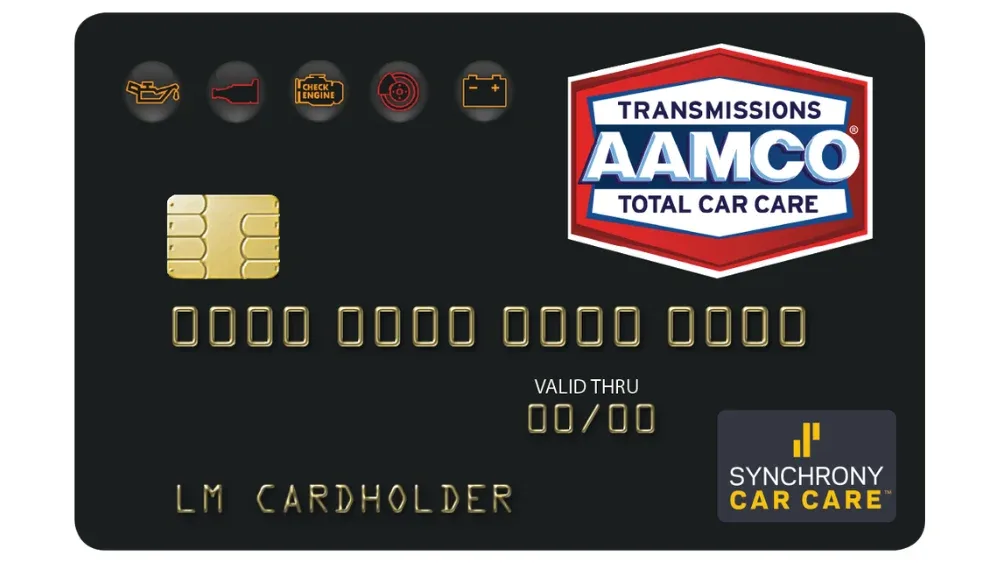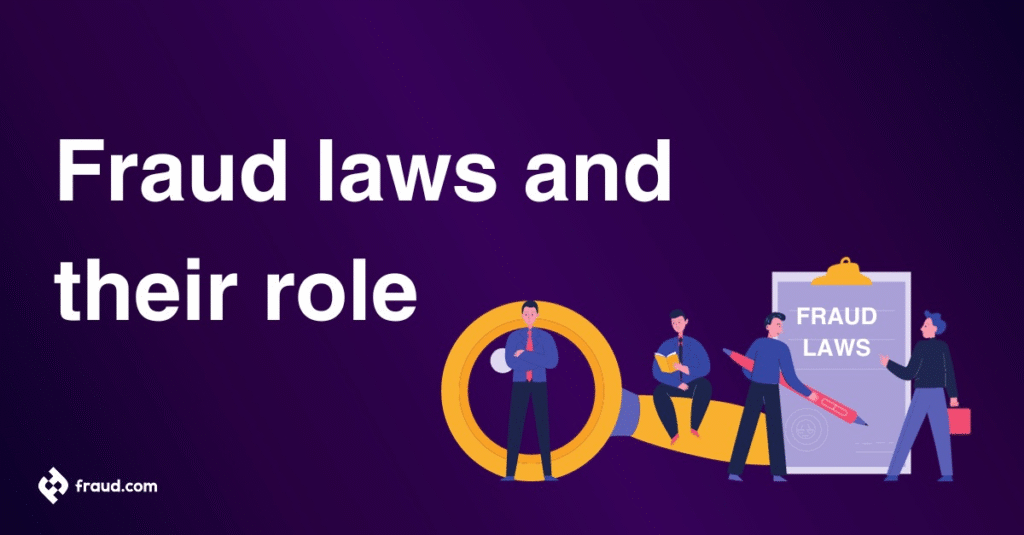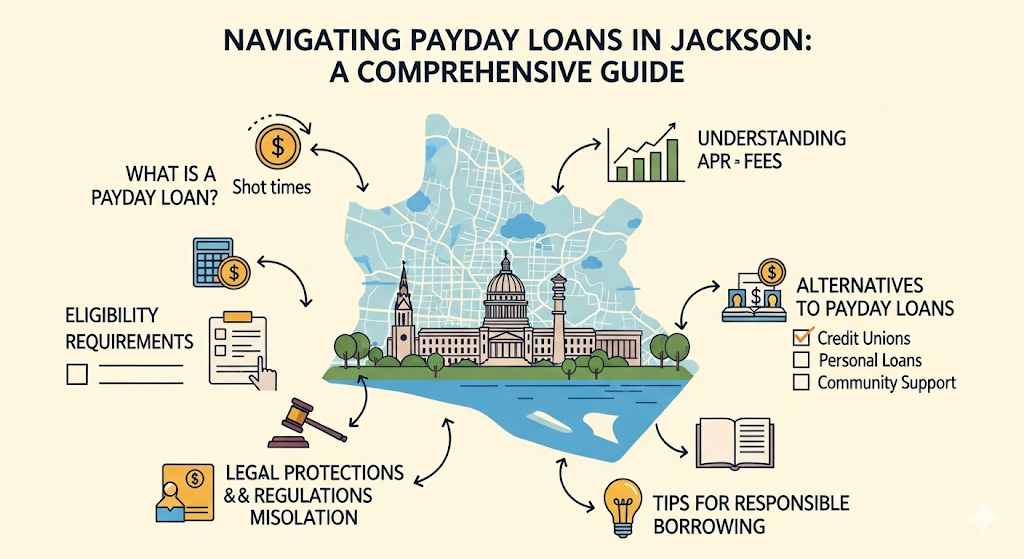
The AAMCO credit card is designed to help customers finance automotive repairs and services with flexible payment options. It offers no annual fee, promotional financing on qualifying purchases, and can be used at most AAMCO locations nationwide. This card provides an easy way to manage auto care expenses without immediate full payment, making car maintenance more accessible.
With credit limits up to $10,000 and promotional periods ranging from six to twelve months, the AAMCO credit card suits customers with good to excellent credit. It also includes perks like zero fraud liability and acceptance at thousands of gas stations and auto service centers. This makes it a practical tool for those who need reliable financing for ongoing vehicle maintenance.
Applying is straightforward, with options to prequalify online and manage the account digitally. The card is backed by Synchrony, offering customers a trusted and secure credit experience aligned with AAMCO’s reputation for over six decades in automotive care.
What Is the AAMCO Credit Card?
The AAMCO Credit Card is designed specifically for automotive repairs and services at AAMCO locations. It offers financing options without annual fees and promotes security features to protect cardholders. Understanding its issuer, network, and use locations helps users make informed decisions regarding automotive expenses.
Overview of the AAMCO Credit Card
The AAMCO Credit Card is a store-branded credit product tailored for customers who need to finance repairs or maintenance at AAMCO service centers. It requires applicants to have good to excellent credit for approval. The card typically offers no annual fee, no application fee, and $0 fraud liability, providing a secure credit option for vehicle care.
Customers can access credit limits up to $10,000. Promotional financing is available, including 6 months interest-free on purchases between $199 and $749.99, and 12 months on amounts over $750, making it a convenient choice for larger repairs.
Issuer and Network Information
This card is issued by Synchrony Bank, a financial institution specializing in retail credit cards. Synchrony’s partnership with AAMCO allows easy account management online or via mobile devices. The card operates on a major credit network, which means it can leverage standard credit protections and fraud monitoring.
The $0 fraud liability policy protects cardholders from unauthorized purchases, reducing the risk of credit card abuse charges. Understanding this protection is important, as felony credit card abuse involves knowingly using credit fraudulently, which the card safeguards against through monitoring and security protocols.
Where Can You Use the AAMCO Credit Card?
The AAMCO Credit Card can be used primarily at participating AAMCO service locations nationwide. These sites cover over 500,000 service points, enabling cardholders to finance most automotive repairs and services. Use outside AAMCO locations may be limited or not accepted, as the card is tailored for AAMCO’s network.
Cardholders should ensure purchases qualify for promotional financing by meeting minimum amounts, such as $199 or more. Additionally, rebate promotions are sometimes available for purchases over $500, requiring submission of receipts and rebate forms. This makes the card a practical tool for managing vehicle repair expenses within the AAMCO system.
Key Features and Benefits
The AAMCO credit card offers practical financing options tailored for automotive repairs and services. It provides flexible credit lines and promotional financing to help manage repair expenses without upfront large payments.
No Annual Fee Details
The AAMCO credit card charges no annual fee, making it a cost-effective tool for customers who need occasional financing on car repairs. There is also no application fee, reducing the initial cost of obtaining the card.
Cardholders benefit from $0 fraud liability, meaning they aren’t responsible for unauthorized charges. This feature adds a layer of security similar to many major credit cards. The absence of fees helps customers focus expenses solely on automotive services without worrying about ongoing costs.
Special Financing Offers
AAMCO credit card offers promotional financing that allows customers to spread out payments interest-free, depending on the purchase amount. For purchases between $199 and $749.99, cardholders may receive six months of special financing.
For larger purchases exceeding $750, 12 months of promotional financing are often available. These options make it easier to afford significant repairs or maintenance without immediate full payment.
Eligibility Requirements
This card targets consumers with good to excellent credit scores. While AAMCO mentions accommodating limited credit cases through general financing programs, the credit card itself typically requires a sound credit history.
Credit limits can reach up to $10,000, depending on creditworthiness. Unlike credit union business credit cards, the AAMCO card is specifically designed for individual use related to automotive expenses rather than business spending.
Regarding concerns like liens, credit card companies generally cannot place liens on personal property such as a house due to credit card debt alone. The AAMCO card follows standard unsecured credit terms, so homeowners need not worry about liens stemming directly from this account.
Application Process for the AAMCO Credit Card

Applying for the AAMCO credit card involves clear steps and specific requirements. The process can be completed online or in-store, with guidelines affecting approval chances and credit considerations. Understanding these elements will help applicants navigate the application effectively.
How to Apply Online or In-Store
Applicants can start the application by visiting the AAMCO website or by applying directly at a participating AAMCO location. Online applicants must select their preferred store location and complete the application form, which requests personal and financial information.
In-store applications allow applicants to speak with a representative who assists throughout the process. Both methods require identity verification and consent for a credit check. If a credit freeze has been placed, it must be lifted by contacting credit bureaus before applying.
Payments and account management can later be handled through Synchrony’s platform, which partners with AAMCO to issue the credit card.
Credit Requirements and Approval Tips
The AAMCO credit card generally targets applicants with good to excellent credit scores, though approval without a FICO score is possible. The issuer may still review other credit history aspects. There are no application or annual fees, which simplifies cost considerations.
Applicants should ensure their credit file is accurate before applying, as errors or freezes can delay approval. Providing up-to-date income information and addressing outstanding debts can improve approval odds.
Approval amounts can reach up to $10,000, with flexible payment and promotional financing options available. Early payment privileges also exist, reducing interest costs for responsible cardholders.
What Affects Your Approval Odds
Several factors affect whether an applicant is approved for the AAMCO credit card. These include credit score, payment history, current debt levels, and any active credit freezes.
Applicants in Georgia or other states should know that unresolved credit card debt has legal timelines, like the statute of limitations for credit card debt in Georgia, which may influence credit reporting and approval chances.
Using “credit card dump sites” or unsecured online sources for card information carries risks and does not impact legitimate approvals. Authentic, accurate information during application is crucial to avoid delays or denial.
Verification of applicant details and credit checks are mandatory. Ensuring completeness and honesty on the application improves the likelihood of a smooth approval process.
Financing Options and Payment Plans
The AAMCO credit card offers flexible financing options designed to help customers manage auto repair costs without immediate full payment. These plans include promotional deferred interest, minimum monthly payments, and automatic payment arrangements.
Deferred Interest Promotions
The AAMCO credit card provides deferred interest promotions on qualifying purchases, allowing customers to avoid interest charges if the balance is paid within a set period.
For purchases between $199 and $749.99, there is a 6-month promotional period. For purchases of $750 or more, the promotion extends to 12 months. If the balance is paid in full by the end of the promotional period, no interest is charged.
If the balance is not fully paid by the end of this period, interest accrued from the purchase date is applied. This option is most beneficial for those who can plan repayment over several months without extra cost.
Minimum Payments and Terms
Customers using the AAMCO credit card must make minimum monthly payments during the financing term. These payments typically represent a small percentage of the outstanding balance or a fixed dollar amount, whichever is greater.
The card imposes a Purchase APR of 34.99% and a penalty APR of 39.99% for late payments or defaults. The minimum interest charge is $2. These terms emphasize the importance of timely payments to avoid high-interest accrual.
This structure aligns with financing options often seen in medical payment plans, like those for orthodontist or root canal dentist payment plans, where manageable monthly payments help spread out costs.
Automatic Payment Pools
Automatic payment pools allow cardholders to set up recurring payments to cover minimum dues or more. This feature helps avoid late fees and maintains promotional financing eligibility by ensuring payments are consistent and on time.
Setting up automatic withdrawals can be especially useful for customers who may have multiple payment plans or debts, streamlining the process and reducing the risk of missed payments.
Many service providers, including AAMCO and similar businesses offering payment plans, encourage automatic payments to secure financing benefits and decrease administrative burdens for both customer and company.
Accepted Repairs and Authorized Purchases
The AAMCO credit card can be used for a variety of automotive-related expenses. It specifically applies to repair services at AAMCO centers but also extends to partnered businesses and fuel purchases.
Eligible AAMCO Services
The card is primarily accepted for automotive repairs and maintenance at participating AAMCO locations. This includes transmission repairs, engine services, brake work, and other mechanical fixes directly offered by AAMCO.
Promotional financing options apply on qualifying purchases, such as 12 months for $750 or more and 6 months for purchases from $199 to $749.99. This makes it easier to manage large auto repair bills without immediate full payment.
AAMCO credit cardholders benefit from flexible payment options tailored to automotive repair needs. The card does not cover non-automotive expenses or services outside the authorized scope of AAMCO repair offerings.
Other Partnered Repair Services
Beyond AAMCO shops, the card is accepted at over 500,000 auto parts and service businesses nationwide. This includes many independent repair shops, tire centers, and auto parts retailers, increasing its usefulness for various vehicle maintenance needs.
Cardholders can also use the AAMCO credit card at more than 200,000 fuel stations, covering all major gas brands. This makes it a practical choice for ongoing automobile expenses beyond just repairs.
It is not designed for unrelated expenses like LASIK surgery or automobile down payment assistance. For these, it’s advisable to consider other credit options tailored to medical or financing needs outside automotive repair.
Rates, Fees, and Terms of the AAMCO Credit Card

The AAMCO credit card offers promotional financing options with specific interest rates and fees, including charges for late payments. Cardholders should understand the key terms, such as APR details and grace periods, to manage their account effectively.
Interest Rates and APRs
The AAMCO credit card features an APR of 34.99% for purchases, which is notably high compared to many other credit options. New accounts are subject to this purchase APR immediately after any promotional period ends.
Promotional financing is available with no interest for either 6 or 12 months, depending on the purchase amount. However, a 2% promo fee applies on balances financed for 18 months or longer.
Gas station purchases and similar transactions do not qualify for promotional financing, and the minimum interest charge is $2. The penalty APR for late or missed payments rises to 39.99%. This card is best suited for individuals with good to excellent credit who can take advantage of the promotions without carrying balances long term.
Late Payment Fees
Late payments on the AAMCO credit card incur fees as outlined in the cardholder agreement, though the exact dollar amount varies. Missing a payment can also trigger the penalty APR increase to 39.99%, which significantly raises the cost of borrowing.
Keeping payments on time is critical to avoid additional fees and higher interest rates. The card protects users with $0 fraud liability but does not waive late fees or penalty APRs. Responsible management involves paying at least the minimum due by the statement due date to maintain favorable terms.
Grace Period Explanation
The card offers a grace period during which no interest accrues on new purchases if the previous balance is paid in full by the due date. This period typically spans about 25 days after the billing cycle ends.
If a balance from a prior month is not paid in full, the grace period on new purchases is lost, and interest accrues immediately. This makes it essential for cardholders to pay off the entire statement balance monthly to avoid paying interest.
Understanding the grace period helps cardholders avoid unexpected interest charges, especially important for those comparing these terms with options like home equity line of credit rates in CT or Virginia, which generally have lower borrowing costs but different structures.
AAMCO Credit Card Account Management
Managing the AAMCO credit card account involves several key aspects, including timely payments, online access to account features, and the ability to integrate transactions with financial software. These capabilities help cardholders maintain control over their spending and streamline their financial tracking.
How to Make Payments
AAMCO credit card holders can make payments conveniently using multiple methods. Payments can be scheduled online through the official payment portal or by phone via the customer service line.
Cardholders may also choose to pay by mail, sending checks to the specified address listed on their billing statements.
It is important to make payments on or before the due date to avoid late fees and interest charges. Setting up automatic payments is an option for those who prefer a hands-off approach while ensuring on-time payment.
Online Account Access
Accessing the AAMCO credit card account online allows users to view balances, transaction history, and payment due dates all in one place.
Users must register for an online account through the AAMCO or Synchrony Bank website to use these features. Once logged in, cardholders can also update personal information, manage communication preferences, and track any ongoing special offers or rewards.
The online platform is designed for ease of use, providing a secure environment for managing credit activity anytime from any device.
Credit Card Reconciliation Software Integration
Many AAMCO credit card users benefit from integrating their account data with credit card reconciliation software. This integration simplifies the process of matching transactions to business expenses, reducing manual entry errors.
Popular accounting programs can often import AAMCO credit card statements directly via secure file downloads or live connections. This helps businesses and individuals maintain accurate financial records and generate precise reports.
Using reconciliation software with the AAMCO credit card ensures transactions are regularly reviewed, improving budget management and financial oversight.
Security, Fraud, and Legal Considerations

The AAMCO credit card incorporates standard security measures to protect cardholders and minimize fraud risks. Users should understand how the card’s fraud protection works, the process for reporting lost or stolen cards, and the steps to take when unauthorized charges appear.
Fraud Protection Features
The AAMCO credit card has built-in fraud detection systems that monitor for unusual or suspicious transactions. These include alerts on spending patterns that deviate from normal behavior and automatic holds on questionable purchases. Cardholders benefit from zero-liability policies, meaning they are not responsible for fraudulent charges if reported promptly.
Additionally, the card issuer employs encryption and tokenization to secure transaction data. This reduces the risk of digital thieves accessing payment information. Familiarizing oneself with terms like “ACQRA charge”—a type of transaction code—can help cardholders identify legitimate versus suspicious activity on their statements.
Reporting Lost or Stolen Cards
If a cardholder suspects their AAMCO credit card is lost or stolen, immediate action is crucial. They must contact AAMCO’s customer service or credit issuer through designated hotlines to report the issue. Prompt reporting triggers card suspension to prevent further unauthorized use.
The cardholder will usually receive a replacement card quickly. Keeping login credentials private and regularly monitoring account statements further supports security. Delays in reporting can result in liability for fraudulent charges, especially if the incident is not documented as a first-time credit card theft offense.
Dealing with Unauthorized Charges
When unauthorized charges appear on an AAMCO credit card, the cardholder should review transaction details thoroughly. It’s important to distinguish between fraudulent charges and authorized purchases, sometimes indicated by merchant descriptors, including unfamiliar labels like ACQRA.
They must formally dispute unauthorized transactions with the card issuer by providing evidence and filing necessary documents. Under federal regulations, the cardholder’s liability is generally capped at $50, but prompt dispute filing often leads to full reimbursement.
Legally, fraudulent use of credit cards can range from misdemeanors to felony charges depending on the dollar amount involved. For instance, offenses involving $250 or more in value within six months may be classified as felonies. Understanding these distinctions helps cardholders navigate disputes and potential legal actions accurately.
Customer Support and Dispute Resolution
AAMCO credit cardholders have access to dedicated customer support for account management and billing concerns. Support includes direct contact options and structured processes for disputing charges or resolving billing errors, ensuring accurate and timely handling of issues.
How to Contact Customer Service
Cardholders can reach JPMCB Card Services for AAMCO credit card support through several channels. The most efficient method is by phone, using the customer service number on the back of the card or official statements. This connects users to representatives trained in handling account inquiries, payment questions, and technical issues.
Online account management portals provide additional options such as secure messaging and balance review. These platforms allow users to submit non-urgent questions or request assistance without waiting on calls. Customer service is available during specified hours, typically Monday through Friday.
For secure communication, it is important to use official channels only. Avoid sharing sensitive information via email or unverified websites to protect against fraud.
Disputing Charges
If a cardholder identifies an unauthorized, incorrect, or questionable transaction on their AAMCO credit card, they should initiate a dispute promptly. The first step involves reviewing recent transactions and gathering any supporting documents, such as receipts or merchant communication.
Disputes can be submitted via JPMCB’s online platform or by contacting customer service directly. It is crucial to provide a clear explanation of the charge in question along with relevant evidence. Timely filing—usually within 30 days of the transaction—is required to meet credit card issuer policies.
Cardholders must not confuse disputes with reporting card loss or theft; these require separate procedures. Upon submission, JPMCB Card Services investigates the claim and communicates the resolution status efficiently.
Resolving Billing Errors
Billing errors include duplicate charges, incorrect amounts, or charges for goods and services not received. To resolve these, cardholders should document discrepancies carefully and notify JPMCB Card Services immediately.
The resolution process involves verifying the claim with merchant records and transaction details. During investigation, disputed amounts may be temporarily credited to the account, reducing financial impact on the cardholder.
Keeping all correspondence, including emails and phone call records, helps support the claim. For specific forms, such as the Synchrony Disputes Questionnaire, cardholders should confirm relevance before submission, as AAMCO credit card disputes usually follow JPMCB protocols.
Effective communication and acting within stated timelines improve the chances of swift error correction and maintain account accuracy.
Alternatives to the AAMCO Credit Card
Several financing options exist beyond the AAMCO credit card, each with distinct benefits and risks. Understanding these alternatives helps select the right approach for automotive repairs or home-related expenses, considering credit needs, loan terms, and flexibility.
Other Auto Repair Financing Options
Customers seeking alternatives to the AAMCO credit card can find financing through personal loans or specialized service financing plans. Some auto repair shops partner with lenders to offer promotional financing similar to AAMCO’s 6 to 12 months deferred interest options but may have varied credit requirements.
Personal loans offer fixed repayment schedules and can be used broadly, not limited to auto services. However, interest rates can be higher for unsecured loans. Secured loans or lines tied to assets might provide lower rates but require collateral.
For those with lower credit scores, financing options with less stringent approvals might be available through subprime lenders or credit unions. These often require careful review of fees and repayment terms.
Home Equity Loans for Repairs
Using home equity loans, especially closed-end home equity loans, provides a way to finance major repairs, including automotive service if funds are allocated accordingly. These loans allow borrowing against the property’s value, often with lower interest rates than unsecured credit.
A second-position home equity loan in areas like Daly City can offer substantial funds but increases overall mortgage risk. Borrowers should consider fees, terms, and potential tax implications tied to these loans.
Home equity lines of credit (HELOCs) provide revolving credit with variable rates, useful for ongoing or unexpected expenses. Lines like cash value lines of credit or real estate lines of credit fall under this type, often providing long-term flexibility compared to one-time loans.
Lines of Credit Versus Credit Cards
Lines of credit and credit cards serve similar purposes but differ significantly in structure and cost. Business lines of credit, such as unsecured options from TN Bank or Coast Hill, offer larger borrowing power with variable interest, often used for ongoing expenses.
Credit cards, including the AAMCO Synchrony card, may have promotional financing but typically carry higher interest rates after the introductory period. Lines of credit often allow interest-only payments and better credit management over time.
For specialized needs, like opening a credit line for home auctions or construction lines of credit, secured or unsecured options provide tailored financing. These can offer flexibility over credit cards if the borrower qualifies, often requiring detailed application and proof of income or assets.
Tips for Responsible Use
Using an AAMCO credit card effectively requires careful attention to payment timing, credit building, and handling financial difficulties. Keeping track of billing cycles and knowing your rights around debt can prevent costly mistakes.
Avoiding Interest and Fees
To avoid interest, cardholders should always pay their balance in full by the due date. Paying only the minimum amount leads to interest accrual, increasing overall debt.
Late fees can be prevented by setting up automatic payments or reminders before the due date. Review the card’s terms to know the grace period and penalty fees.
In Georgia, the statute of limitations for credit card debt is typically six years. This means creditors have six years to sue for unpaid balances before the debt becomes unenforceable in court.
Building Credit with Store Cards
An AAMCO credit card can help build credit if used wisely. Making timely payments and keeping the credit utilization below 30% positively impacts credit scores.
Store cards often have lower credit limits, so regular monitoring is essential to avoid maxing out the card. Responsible usage over time establishes a positive credit history.
Checking credit reports regularly ensures no errors or unauthorized activity. This vigilance helps maintain the benefits of using a store credit card like AAMCO’s.
What to Do If You Can’t Pay
If a cardholder cannot pay the bill, contacting AAMCO’s customer service promptly is crucial. They may offer hardship programs, payment plans, or temporary relief.
Ignored debt can lead to collections or legal action. In cases where no contract exists but the debt is valid, contractors or creditors may still sue for non-payment.
Understanding the legal processes specific to Georgia helps cardholders respond correctly. Seeking financial advice or credit counseling is also advisable when payments become unmanageable.
Common Issues and Troubleshooting
Credit card users often face specific issues related to declines, technical malfunctions, and unclear transaction details. Knowing how to identify and resolve these problems efficiently helps maintain smooth account management and prevents confusion about charges.
Card Declined: Soft vs. Hard Declines

A soft decline occurs when the issuer temporarily rejects a transaction. This can happen due to insufficient funds, spending limits, or a suspected security risk. Soft declines do not block the card permanently; the user can usually retry the transaction or contact customer service for assistance.
A hard decline is a more severe rejection. It happens when the card is expired, reported lost or stolen, or if the account is closed. This requires resolving the underlying issue before use resumes. For example, if a user sees a charge like “Towson CMF” or “Modern Leasing MI” they didn’t recognize and the card is declined, they should verify if these are authorized charges or potential fraud.
Resolving Technical Issues
Technical problems might involve system outages or errors during payment attempts. If users experience sudden declines or cannot access their AAMCO credit card account, contacting the issuer promptly is critical.
Issues could also include difficulties with online payments or mobile app malfunctions. Asking the credit card company to reverse fees caused by outages helps protect the user from extra costs. Troubleshooting tips include verifying card details, ensuring sufficient credit limits, and updating payment apps.
Understanding Transaction Descriptions
Transaction descriptions can sometimes be unclear and cause concern. Charges like “Blossom Up,” “Good Sportsman,” or “Corporate Filings LLC” may appear on statements without immediately recognizable context.
Users should track purchases made around the date of the charge to confirm if it is legitimate. If an unknown charge appears, contacting the credit card issuer for clarification is important. Additionally, merchants such as companies offering to “buy proxy with credit card” or unexpected corporate fees should be reviewed carefully to avoid unauthorized payments.
Understanding Credit Card and Payment Security
Payment security is essential for protecting personal financial information. Proper use of security features and awareness of potential risks can significantly reduce unauthorized access and fraud.
Best Security Practices
Users should monitor their credit and debit accounts regularly for suspicious activity. Enabling alerts for transactions helps quickly identify unauthorized charges.
Securing account credentials, such as strong, unique passwords and not sharing PINs, is crucial. Physical cards should never be left unattended or shared.
For debit cards, using a PIN protects against unauthorized purchases. Unlike some credit cards, debit transactions often require a PIN to validate the user.
If a card is lost or stolen, immediate reporting to the issuer minimizes potential losses. Cardholders should also be cautious when using public Wi-Fi to make payments or access financial accounts.
Chip and Pin Technology in Credit Cards
Chip-enabled cards use embedded microprocessors to create unique transaction codes, which cannot be reused. This reduces fraud from card cloning compared to magnetic stripe cards.
The PIN verifies the user’s identity during the transaction. For debit cards, entering a PIN is typically mandatory for purchases and ATM withdrawals. For credit cards, it may depend on the issuer or country.
Chip malfunctions can occur, but most cards allow fallback to a magnetic stripe with additional verification, such as signature or PIN. Users should notify their bank if chip errors persist.
Retailers with chip readers enhance security by requiring card insertion instead of swiping, minimizing the risk of stolen card data.
Preventing Identity Theft
Protecting personal information online and offline is critical. Avoid sharing card details unless on secure websites verified by HTTPS and PCI compliance.
Regularly reviewing statements can reveal fraudulent activity early. Immediate action, like freezing the account or issuing a new card, limits damage.
Using credit, not debit cards, for online shopping provides better fraud protection since debit cards withdraw funds directly from accounts.
Cardholders should shred documents with sensitive data and avoid public Wi-Fi for financial transactions. Identity theft protection services can aid in monitoring and recovery if fraud occurs.




